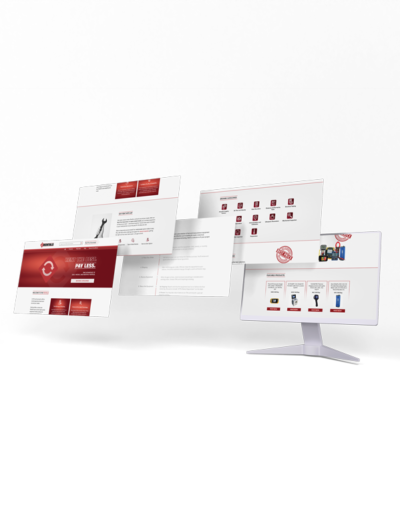Project Description
Case Study
REED Instruments – Full Site Revamp
A complete UX redesign of REED Instruments’ corporate website (reedinstruments.com) focused on improving findability, streamlining support flows, and clearly communicating REED’s distributor-based sales model.
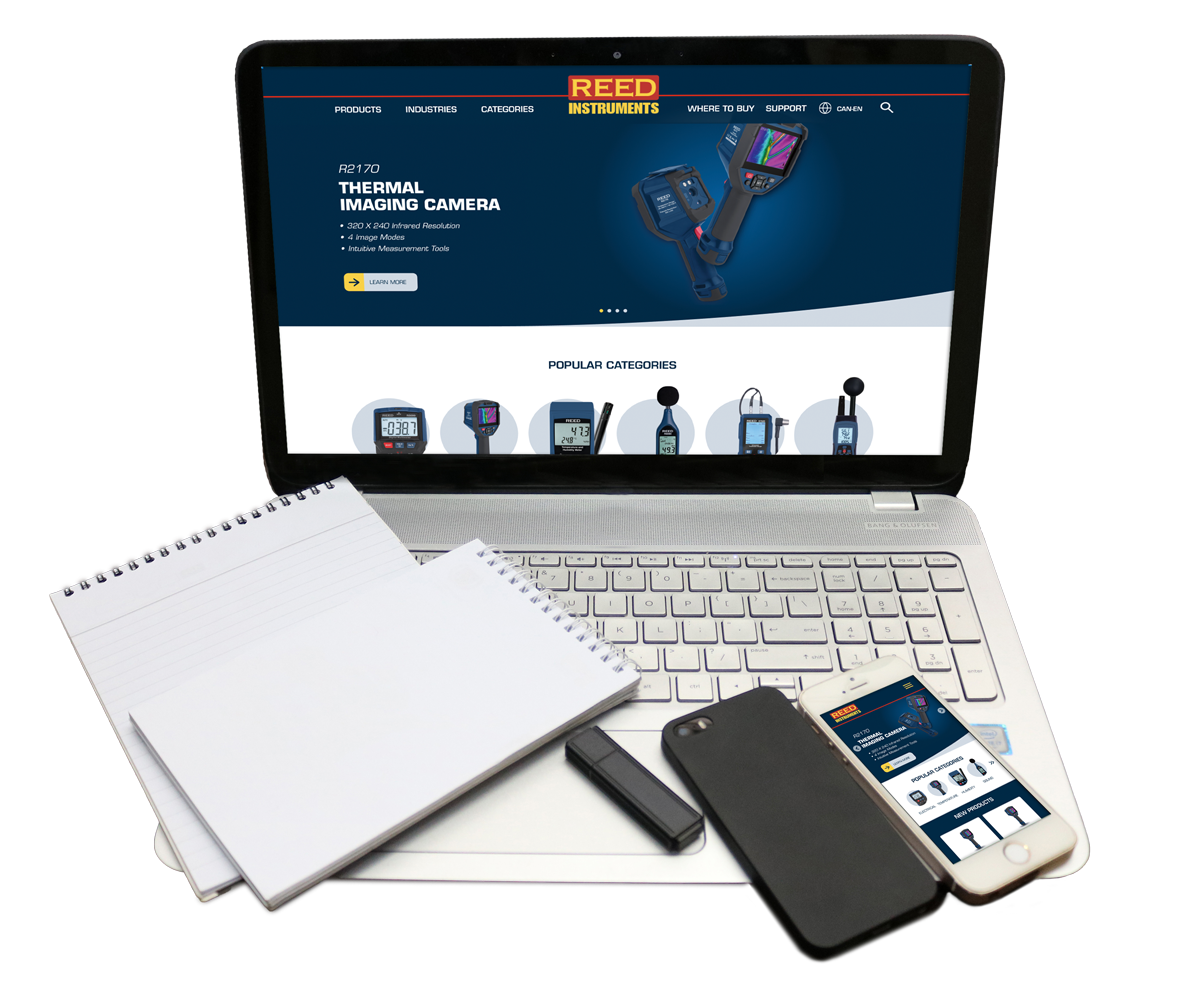
Role
Lead UX/UI Designer – research, IA (Information Architecture), wireframing, prototyping, mobile mockups, and developer.
Team
Collaboration with developers, Front-end specialists and stakeholders.
Overview
REED Instruments’ website was outdated and technically limited, with poor navigation and no mobile responsiveness. The full redesign modernized the visual design, improved functionality, and ensured mobile-friendly experiences across all devices. Extensive research, analysis, and user-centered design guided the revamp to create a cohesive, intuitive, and professional site that clearly communicates support, calibration services, and distributor information.
The Problem
- Outdated Design: The aesthetic was old-fashioned, not reflecting the brand’s innovation.
- Poor Navigation: Users struggled to find product information and support resources.
- Technical Limitations: The site had frequent bugs, slow load times, and was not responsive on mobile devices, leading to a frustrating experience for users on phones and tablets.
Goals
- Modernize the website design to reflect REED Instruments’ brand and technical expertise.
- Improve usability and navigation so users can easily find products, support resources, and distributor information.
- Enhance technical performance, including faster load times and cross-device compatibility.
- Ensure full mobile responsiveness for seamless use on smartphones and tablets.
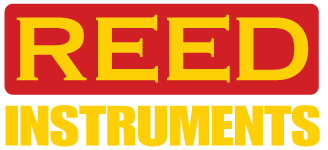
UX Process
Discovery & Research
- Stakeholder Interviews: Gathered business goals, pain points, and priorities.
- Analytics & Behavior Review: Identified high-exit pages and navigation bottlenecks via Google Analytics and Hotjar.
- Competitor Analysis: Reviewed industry-leading B2B instrument sites for best practices.
- Site Audit: Evaluated content gaps, technical issues, and mobile limitations.
Outputs: Research synthesis, pain points & opportunity areas, UX metrics baseline
Wireframing & Prototyping
- Low-fidelity wireframes validated layout and content placement.
- High-fidelity wireframes and interactive Figma prototypes refined visual hierarchy, typography, and mobile-first design.
- Focused on forms and contact flows, ensuring clarity and ease of use.
Outputs: Desktop & mobile wireframes, interactive prototype, form/CTA designs
Information Architecture & User Flows
- Redesigned site structure for easy access to products, support, calibration, and distributor info.
- Developed user flows for key tasks: contacting support, booking calibration services, finding distributors.
- Created navigation hierarchy reflecting REED’s distributor-focused model.
Outputs: Sitemap, task-based user flows, wireframe sketches
Handoff & Implementation Support
- Delivered developer-ready Figma assets, annotated with typography, spacing, color, and responsive breakpoints.
- Provided interaction guidelines for forms, CTAs, and mobile responsiveness.
- Collaborated with QA to ensure correct implementation.
Outputs: Hi-fidelity prototype, style guide, developer handoff documentation
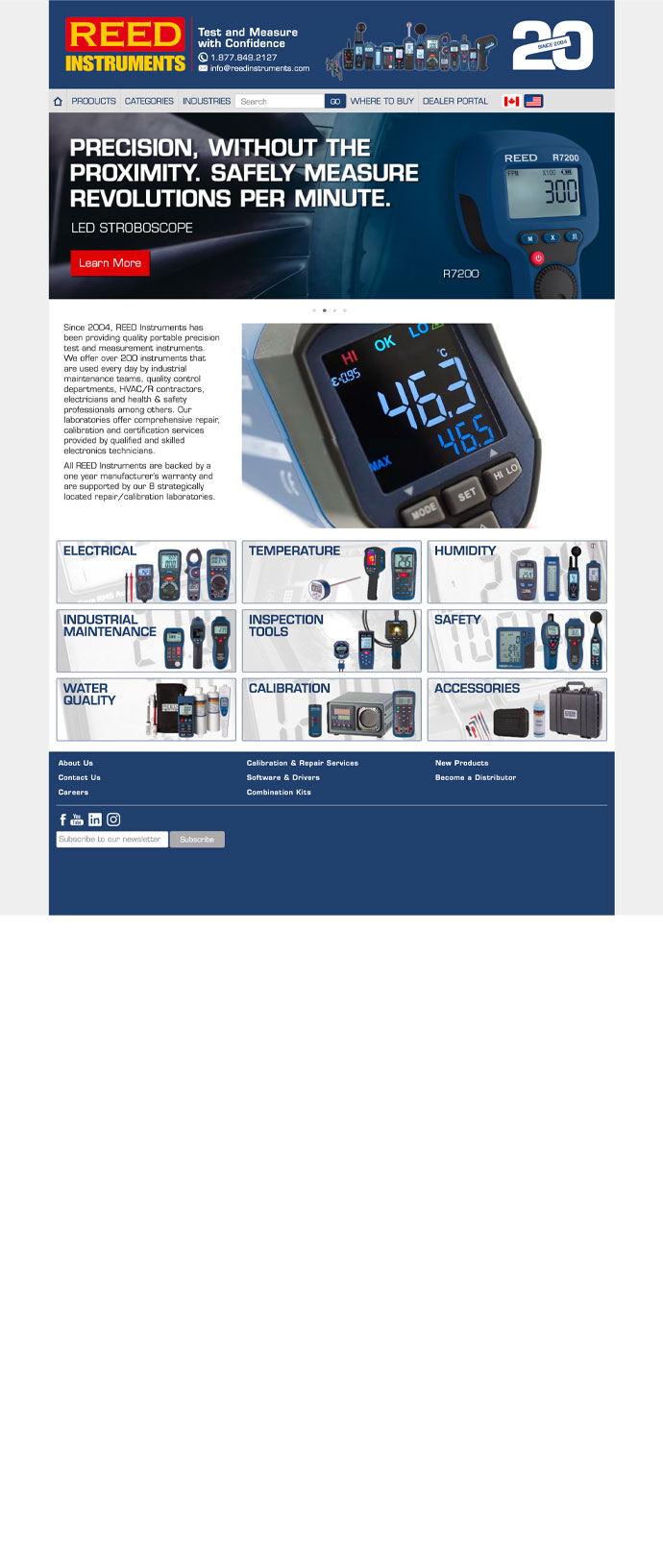
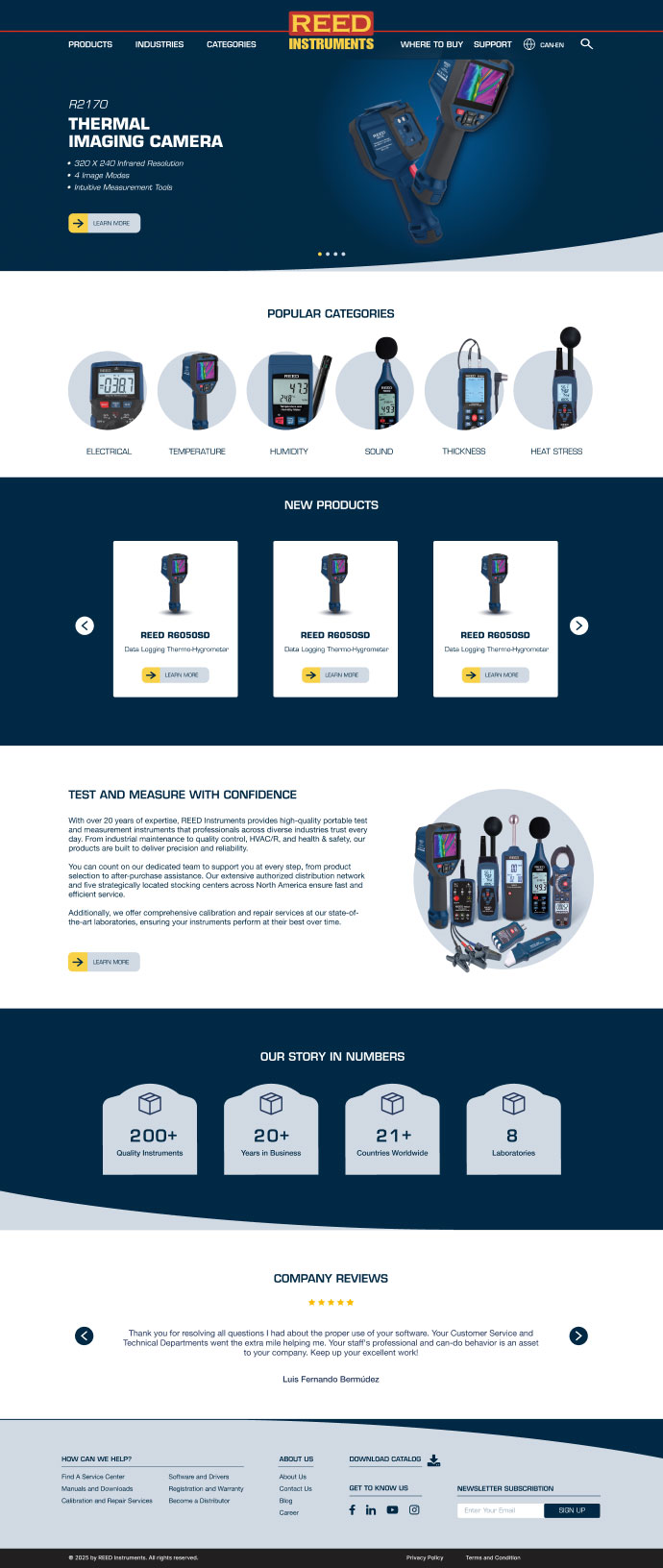
Final Outcome
The full redesign delivered a modern, user-friendly, and mobile-responsive website for REED Instruments, addressing the issues of the previous outdated site. Key outcomes include:
-
Enhanced Usability: Users can now easily find product information, manuals, calibration instructions, and support resources, reducing confusion and frustration.
-
Mobile Responsiveness: The website provides a seamless experience on smartphones and tablets, accommodating users who rely on mobile access in labs or in the field.
-
Streamlined Support & Calibration Workflows: Clear forms and guidance reduce the time and effort required to submit calibration or repair requests, minimizing back-and-forth emails.
-
Clear Distributor Guidance: The new site prominently communicates that REED products are sold through distributors, helping B2B buyers quickly locate authorized partners.
-
Improved Visual Design & Brand Perception: A modern, professional aesthetic better reflects REED Instruments’ technical expertise and builds credibility with engineers, technicians, and procurement officers.
-
Reduced Friction & Increased Engagement: Simplified navigation, structured content, and interactive prototypes validated by user testing ensure users complete tasks efficiently.
-
Scalable Foundation: The updated information architecture and design system provide a strong base for future product pages, support features, and potential international expansions.
Overall Impact: The redesign not only modernized the site visually but also aligned it with user needs, mobile-first expectations, and REED’s B2B distributor model, creating a cohesive, reliable, and professional experience for all visitors.
High-Fidelity Prototypes
A preview of several main page prototypes for the reed instruments website.
These designs illustrate the evolving visual style and user flow of the project. The REED project is still in progress, with additional pages and refinements currently being developed.
Home page
Category page
Product page
Where to Buy


